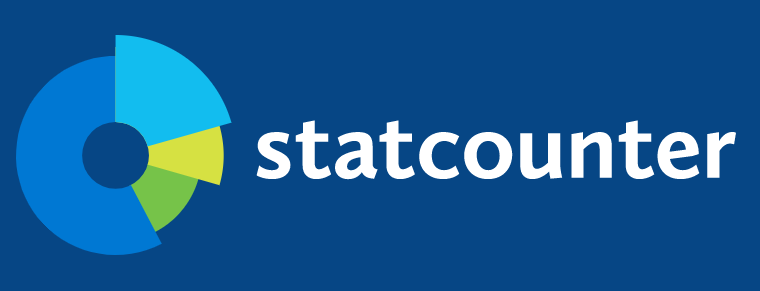The selection of public transportation modes in industrial era 4.0
Abstract
Keywords
Full Text:
PDFReferences
Agus, A., & Ridwan, M. (2019). Pemetaan Objek Wisata Alam Kabupaten Kepulauan Selayar Berbasis Sistem Informasi Geografis Arcgis 10.5. PUSAKA (Journal of Tourism, Hospitality, Travel and Business Event), 1(1), 45–50. https://doi.org/10.33649/pusaka.v1i1.12
Amajida, F. D. (2016). Kreativitas Digital Dalam Masyarakat Risiko Perkotaan: Studi Tentang Ojek Online “Go-Jek†Di Jakarta. Informasi, 46(1), 115. https://doi.org/10.21831/informasi.v46i1.9657
Anindhita, W., Arisanty, M., & Rahmawati, D. (2016). Analisis Penerapan Teknologi Komunikasi Tepat Guna Pada. Seminar Nasional INDOCOMPAC, 2, 712–729.
Arifianto, E. Y., & Himawan, R. (2018). STRATEGI PENGEMBANGAN INDUSTRI KREATIF KERAJINAN TOPENG ERA INDUSTRI 4.0. Seminar Nasional IENACO - 2018, 567–574. Surakarta: Universitas Muhammadiyah Surakarta.
Büyüközkan, G., Feyzioğlu, O., & Göçer, F. (2018). Selection of sustainable urban transportation alternatives using an integrated intuitionistic fuzzy Choquet integral approach. Transportation Research Part D: Transport and Environment, 58, 186–207. https://doi.org/10.1016/j.trd.2017.12.005
Chang, H. H., Hsu, C.-H., & Chung, S. H. (2008). The antecedents and consequences of brand equity in service markets. Asia Pacific Management Review, 13(3), 601–624. Retrieved from https://open.uct.ac.za/handle/11427/20258
Djakfar, L., Indriastuti, A. K., & Nasution, A. S. (2010). Studi Karakteristik Dan Model Pemilihan Moda Angkutan Mahasiswa Menuju Kampus ( Sepeda Motor Atau Angkutan Umum ) Di Kota Malang. Jurnal Rekayasa Sipili, 4(1), 37–51.
Eva, A. (2007). Persepsi Penggunaan Aplikasi Internet Untuk Pemasaran Produk Usaha Kecil Menengah. Seminar Nasional Aplikasi Teknologi Informasi, 2007(Snati), 1907–5022. https://doi.org/1907-5022
Fitria, E. M. (2015). Dampak Online Shop Di Instagram Dalam Shopaholic Di Samarinda. E-Jurnal Ilmu Komunikasi, 1(3), 117–128.
Gabriel, M., & Pessl, E. (2016). Industry 4 . 0 and Sustainability Impacts : Critical Discussion of Sustainability Aspects With a Special Focus. ANNALS of Faculty Engineering Hunedoara – International Journal of Engineering, 14(2), 131–137.
Hamdan, H. (2018). Industri 4.0: Pengaruh Revolusi Industri Pada Kewirausahaan Demi Kemandirian Ekonomi. Jurnal Nusantara Aplikasi Manajemen Bisnis, 3(2), 1. https://doi.org/10.29407/nusamba.v3i2.12142
Livano, A., & Herdinata, C. (2014). Peran Karakter Passion Dan Market Sensitivity Dalam Startupbusiness Udifer Bags. Prosiding Seminar Nasional: Economic Globalization Trend & Risk for Developing Country, 1–15.
Nakamura, H., & Abe, N. (2016). Tourist decisions in renting various personal travel modes: A case study in Kitakyushu City, Japan. Tourism Management, 55, 85–93. https://doi.org/10.1016/j.tourman.2016.02.005
Novantirani, A., Sabariah, M. K., & Effendy, V. (2015). Analisis Sentimen pada Twitter untuk Mengenai Penggunaan Transportasi Umum Darat Dalam Kota dengan Metode Support Vector Machine. E-Proceeeding of Engineering, 2(1), 1–7.
Pratama, M. G., M, W. B., & A, K. (2017). Analisis Deskriptif Konsumen Dan Mitra Pengemudi Pada Jasa Transportasi Online Ride Sharing. Jurnal Sains Dan Seni ITS, 6(2), 2–5. https://doi.org/10.12962/j23373520.v6i2.23108
Radanliev, P., De Roure, D. C., Nurse, J. R. C. C., Nicolescu, R., Huth, M., Cannady, S., & Montalvo, R. M. (2019). New developments in Cyber Physical Systems, the Internet of Things and the Digital Economy – future developments in the Industrial Internet of Things and Industry 4.0. University of Oxford, (March), 1–11. https://doi.org/10.13140/RG.2.2.14133.93921
Rahman, R. (2009). Studi Pemilihan Moda Angkutan Umum Antar Kota Menggunakan Metode Stated Preference. SMARTek, 7(4), 229–243.
Supriyanto, S., & Anggraini, O. (2018). Penguatan Kapasitas Usaha Perikanan dalam Pengembangan E-commerce di Kabupaten Bantul. Proceeding of Community Development, 1(2017), 173. https://doi.org/10.30874/comdev.2017.23
Sutandra, L., & Sulaiman, S. (2019). Analisis Layanan Teknologi Komunikasi Klinik Fisioterapi Siti Hajar. QUERY: Jurnal Sistem Informasi, 3(April 2019), 36–45.
Suwardana, H. (2017). Revolusi Industri 4. 0 Berbasis Revolusi Mental. JATI UNIK : Jurnal Ilmiah Teknik Dan Manajemen Industri, 1(2), 102–110. https://doi.org/http://ojs.unik-kediri.ac.id/index.php/jatiunik/article/view/117/0
The Nielsen Company. (2017). What’s in-store for online grocery shopping. (January), 37. Retrieved from http://www.nielsen.com/content/dam/nielsenglobal/de/docs/Nielsen Global Connected Commerce Report January 2017.pdf
Toar, J. I., Timboeleng, J. A., & Sendow, T. K. (2015). Analisa Pemilihan Moda Angkutan Kota Manado – Kota Gorontalo Menggunakan Model Binomial-Logit-Selisih. Jurnal Sipil Statik, 3(1), 27–37. Retrieved from https://ejournal.unsrat.ac.id/index.php/jss/article/view/6790
Wahyusetyawati, E. (2017). Dilema Pengaturan Transportasi Online. Jurnal RechtsVinding, (April), 1–4. Retrieved from https://rechtsvinding.bphn.go.id
Wicaksono, S. (2014). Analisa Faktor–faktor yang Mempengaruhi Pemilihan Moda Transportasi Penduduk Kerja di Kecamatan Sukmajaya Depok Menuju Tempat Kerja dengan Menggunakan Metode Analytic Hierarchy Process. 1–18.
Widiarta, I. B. P. (2010). Analisis Pemilihan Moda Transportasi untuk Perjalanan Kerja. Jurnal Ilmiah Teknik Sipil, 14(2), 218–225. Retrieved from https://ojs.unud.ac.id/index.php/jits/article/view/3638
Zak, J. (2017). Multiple-Criteria and Group-Decision Making in the Fleet Selection Problem for a Public Transportation System. Transportation Research Procedia, 27, 43–52. https://doi.org/10.1016/j.trpro.2017.12.102
DOI: https://doi.org/10.30872/jmmn.v12i1.6111
Refbacks
- There are currently no refbacks.
Copyright (c) 2020 Faizal Haris Eko Prabowo, Endang Rustendi, Annisa Nurbaiti
Editorial Address
Jurnal Manajemen
Faculty of Economics and Business, Mulawarman University
Jl. Tanah Grogot No.1 Samarinda Kalimantan Timur 75119
Email: jmmn.feb.unmul@gmail.com
Statcounter: Jurnal Manajemen


